
Expensive large-caliber rifles and more variables than you can shake a stick at, do you have what it takes to compete in King of 2 Miles?
Basic King Of 2 Mile Requirements:
- Rifle Weight: Fewer than 40 pounds
- Other Equipment Weight: Fewer than 25 pounds
- The shooter must be able to carry all equipment to the firing line in one trip.
- The bipod must attach at a single point.
- The bipod must contact the ground at no more than two points.
- Any monopod or rear bag that’s as long as the monopod must be attached to the stock.
Imagining settling yourself in behind a rifle as tall as a 6th-grader, taking careful aim, pressing the trigger to the rear and launching a bullet that might weigh in at over an ounce. Your rifle barks, and the muzzle brake and 40 pounds of mass soak up some of the recoil.
As you settle back in from the rifle’s recoil for a second sight picture, seconds pass. Your spotter is silent.
Four seconds pass … 5 … 6. You hear a bell cut through the air, indicating an impact on the 48×60-inch target 3,525 yards away.

Congratulations! You and your team managed to hit the final target in the King of 2 Mile extreme long-range shooting competition.
Your spotter calls, “Same shot!” The rifle bucks, and the process starts all over.
What’s the Point?
Is a 40-pound rifle going to be ideal for hunting or defensive uses? No. But what these rifles do offer is a testing platform that’s propelled long-range shooting tech since the inaugural match in 2015.
The goal is to push the boundaries of what’s possible with a rifle considered “man-portable” by the Fifty Caliber Shooters Association (FCSA)—the event’s sanctioning organization.
We sat down with Robert Waggoner of Alamo Precision Rifles in Hurst, Texas, to get a better idea about what kind of equipment it takes to be competitive at King of 2 Mile. Waggoner not only co-owns (along with Jason Davidson) one of the top precision rifle shops in the country, he’s also an accomplished precision shooter, hunter and the president of the Extreme Long Range Shooting Organization (ELRSO), which offers some unique matches that can reach out to 3,500 yards to help shooters build the qualifications needed to secure a spot at King of 2 Mile.
Caliber Choice and Component Selection
As you might guess, choosing the caliber your rifle will be chambered in will likely affect other aspects of the rifle. Because the goal of the competition is to further development for man-portable long-range rifles, the choices you make should be focused on maintaining a balance between capability and portability.
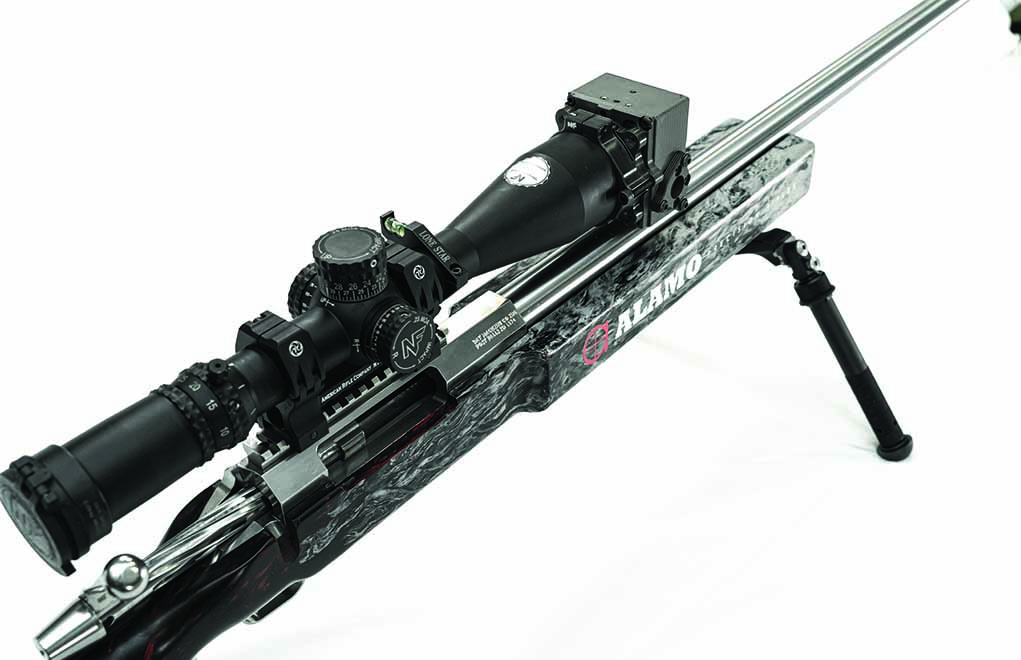
A heavier bullet is going to give you more splash with missed shots—at the expense of heating the barrel a bit faster and creating more recoil. Should you choose a caliber with a lighter projectile, it might be harder to spot splash, but there’s less heat, recoil and concussion from the rifle.
In an effort to remove as many variables as possible, ammunition is almost universally hand-loaded for this competition. The basic recipe is to use one of those lathe-turned, solid bullets and a bunch of slow-burning powder in a meticulously prepared case in which you carefully put a quality primer. Ammunition components beyond the bullet vary so widely that even narrowing down the common ones is a nearly impossible task.
More Long-Range Shooting Info:
- Top 17 Affordable Precision Rifles — Bolt-Action Edition
- 9 Long-Range Shooting Fundamentals You Must Master
- Factors In Selecting A Long-Range Cartridge
- .50-Caliber: The Art Of Extreme Long-Range Shooting
- Secrets To Mounting A Precision Scope On A Long-Range Rifle
Extreme Long-Range Cartridges
.50 BMG: The obvious choice would be .50 BMG, because the event is held by the Fifty Caliber Shooters Association. With only 40 pounds to work with, lighter and more-efficient cartridges have almost completely replaced the .50 BMG in competition.
.460 Steyr: The first cartridge that was developed from the .50 BMG case is the .460 Steyr, developed in 2004 for areas that had banned the .50 BMG. The .416 Barrett is often confused with the .460 Steyr’s history, but the cartridge does well in ELR competitions. The .460 is an attractive choice for those seeking a big, heavy bullet that’s still efficient at distance.
.416 Barrett: There’s some Internet lore surrounding the reason for the .416 Barrett. Some “forum commandos” incorrectly believe the cartridge was designed as a result of California’s ban of the .50 BMG. In reality, the .416 Barrett was designed at the request of the Naval Surface Warfare Center Crane Division in 2004. Barrett offers a Model 99 and the Model 82A1 in that caliber. The .416 Barrett is a popular choice—thanks to very efficient heavy-bullet options. Again, remember that weight means larger dirt splashes, which are easier to spot and call corrections from.
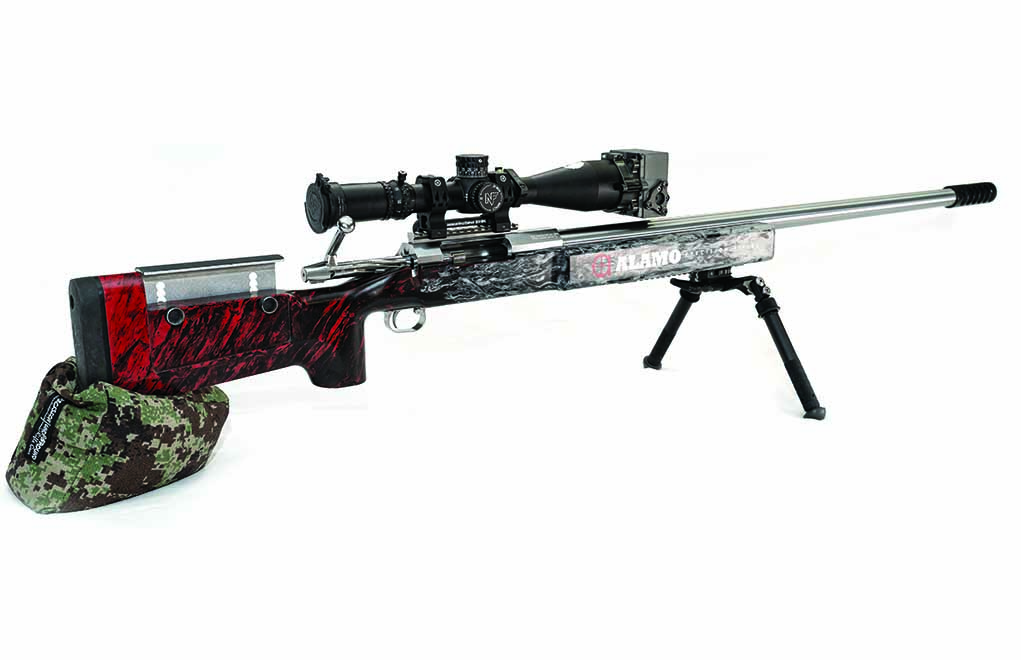
.375 & .408 CheyTac: Both the .408 and .375 CheyTac are derived from the .505 Gibbs, an old, English big-game cartridge that’s primarily found in beautifully crafted Mauser 98-based bolt-actions. The old .505 Gibbs was designed to handle only about 39,000 psi—nearly 25,000 psi short of the pressures the .408 CheyTac generates—so the case was strengthened. You won’t see the .408 on the King of 2 Mile firing line nearly as much as the more efficient .375 CheyTac, which offers a better ballistic coefficient, is less affected by wind and produces less recoil. As with everything else in life, there’s no free lunch: While the .375 CheyTac offers a lot, you do lose bullet weight … which means harder-to-spot misses. With only five attempts at the target, a miss from which your team didn’t see splash could cost the team dearly in points.
Wildcats: It shouldn’t be a surprise that there’s a constant need to look for small improvements that give a competitor an edge over others. Most of the wildcats are based around a .375 bullet, such as the .375 CheyTac Improved, .375 Warner and .375 Libert. Obviously, the sky’s the limit with wildcats … as long as your rifle complies with the event rules.
Off-the-Shelf Rifles
There are some off-the-shelf rifles that have the capability to hit that 3,525-yard target, but they might not meet the rules or be as competitive as a custom rifle.
If you’re intent on trying your hand at ELR shooting, Cadex Defense, JJ Rock Co., Desert Tech, Victrix Armament, Barrett, Noreen Firearms and several other manufacturers have off-the-shelf options that might fit the bill for you. Keep in mind that a production or semi-custom rifle might not be as competitive as a rifle tailored for the event.
Some rifle builders offer semi-custom packages (such as the Azle Mirage ULR, TX, Hill Country Rifles or Gunwerks) that comply with the rules of the event but, again, might not be ideal to go toe to toe with some of the most accomplished ELR shooters in the world and their custom-built rigs.
Custom Rifles
While semi-custom rifles are options, full-custom rifles are the most common sight on the firing line and are likely the direction most competitors will take.
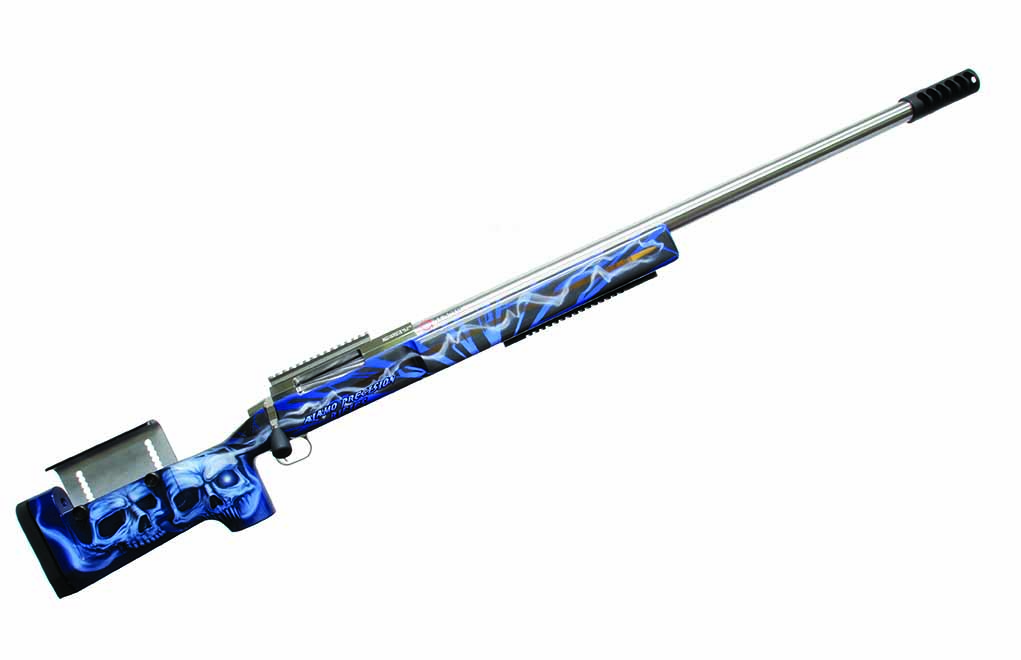
A full-custom will allow you to tailor your rifle to your team’s specific needs, because each component is selected and specified by your team, as the name implies. Most highly skilled rifle builders will be able to help you with one, but do your research on the shop: There’s no shortage of snake oil in the precision rifle game. In addition, before you drop that deposit money on your build, make sure the shop has experience building a rifle in the ELR category.
Action
Because you’re really limited to three that are capable of chambering the super-mag cartridges ideal for the event, there aren’t a lot of options to choose from for the action. None of the actions I located with BMG or CheyTac bolt faces accommodates standard safeties (but more on that when we get to triggers).
The BAT Machine has two options to choose from: its Model EX and the newer Model EXS, which was added to make it easier for competitors to meet the 40-pound weight limit at King of 2 Mile. If BAT Machine’s offerings don’t excite you, and your team selected a CheyTac-based cartridge, something such as the Barnard Model P-Chey, the JJ Rock Co. SuperXL or the Stiller TAC 408 action might be the right call.
When it comes to selecting your action, and if this is your first dive into an ELR rifle, it’s always best to check with your rifle builder to get their feedback.
Barrel and Muzzle Device
As is the case with other precision rifle competitions, barrel manufacturers are all over the place, with nearly every one being represented at some level of the competition. Most of the barrels hover in the 30- to 38-inch range in order to stay within weight limits while getting the most out of the slow-burning powder most teams use.

Some of the brands that do make regular appearances are K&P Barrels, Bartlin and Kreiger, but remember that the quality of the barrel is just as important as who chambered the barrel. As long as your gun builder is willing to stake their reputation on a barrel brand, it’s probably going to perform.
Muzzle devices are a hearty mix of muzzle brakes and suppressors. Some of the stand-out muzzle brakes are from Area 419 and the T5 Terminator.
Stock
Although chassis systems have taken over other aspects of precision rifle shooting—thanks to the ability to tack stability-enhancing accessories onto the rifle—they haven’t taken the ELR crowd by storm.
McMillan has a strong foothold in the ELR market. However, its presence in other precision shooting sports has started to become less commonplace due to chassis rifles taking over PRS. That said, the McMillan Beast II was purpose-built for ELR shooting, making it one of the most common choices of competitors. The McMillan A5 and A6 Supermag stocks are also favorites, primarily with shooters who come from a PRS-style competitive setting.
McMillan isn’t the only stock maker to have a model designed for the needs of the ELR shooter. Manners designed its MCS-LRT, which sports tactical features, especially for King of 2 Mile. You can get the MCS-LRT for a .50 BMG-size action that also works for .416 Barrett. Alternatively, you can opt for the version of the stock that accepts a 1.6-inch-diameter action if you’re going to be shooting a CheyTac-based cartridge.
Lastly, the Mirage ULR chassis is one of your best options if you’re a die-hard chassis lover. Mirage ULR has been doing great things for the ELR community for some time. Not only is it a world-class rifle builder, it also has one of the most common ELR chassis on the market. With a call to its shop or an e-mail, you can have one configured exactly as you want.
Trigger
Just about any Remington 700-pattern trigger that can either be run with no safety or with a bottom safety is going to work just fine. Some of the popular triggers come from TriggerTech, Bix’n Andy, Timney and Jewell.

You might wonder why you need a trigger without a safety or a bottom safety inside the trigger guard. Simply put: Because the actions are so big, the relief cut to slide a traditional 700 safety to the top of the receiver isn’t present, making a bottom safety or no safety the only way to go.
Optics and Mounts
Even though milliradian-based scopes are the “cat’s pajamas” in other precision rifle sports such as PRS, MOA is more common by a large margin. In other disciplines, the ability to quickly dial elevation or windage might be an advantage, making the more-coarse milliradian (mil) adjustment preferred. Without getting too deeply into the math, that means that while one click on a mil scope will equal .1 mil, the same single click on the typical ¼ MOA adjustment scope is equivalent to 0.0741 mil. When pushing a rifle out to the final target, that could mean a rather large variance that starts to bring some unpredictability—a precision shooter’s enemy.
Add More Elevation
A means of adding more elevation than you’re used to seeing on a traditional precision rifle is a must unless you’ve paid for a purpose-built ELR scope such as the March Genesis 6-60X56mm ELR scope. It has enough elevation to take a .375 CheyTac past 4,000 yards.
Those shooting with a more traditional scope, such as the Nightforce ATACR 5-25x56mm or ATACR 7-35x56mm, will need a means of adding the elevation they need. One of the popular options is an adjustable base from Cold Shot, which adds in an extra 300 MOA of vertical adjustment to your scope. Pair it with a Spuhr scope mount or an adjustable mount, such as the Ivey adjustable mount or ERA-TAC’s adjustable mount.
Lastly, there’s a prism unit that cleverly adds in elevation by using mirrors: the TacomHQ Charlie TARAC (sometimes called a “Charlie unit” or “taco”). This clever device can be permanently affixed to the rifle or scope with some wingnuts. Alternatively, it can stay in place, thanks to some high-powered magnets that interface with a ring on the scope bell.
Spotting Scopes
You’re going to need two high-quality spotting scopes or binoculars for your teammates. Your spotter might like to have a spotting scope with a reticle so they can call corrections quickly and easily. Remember: You only have 10 minutes to finish the course of fire, so time is of the essence.
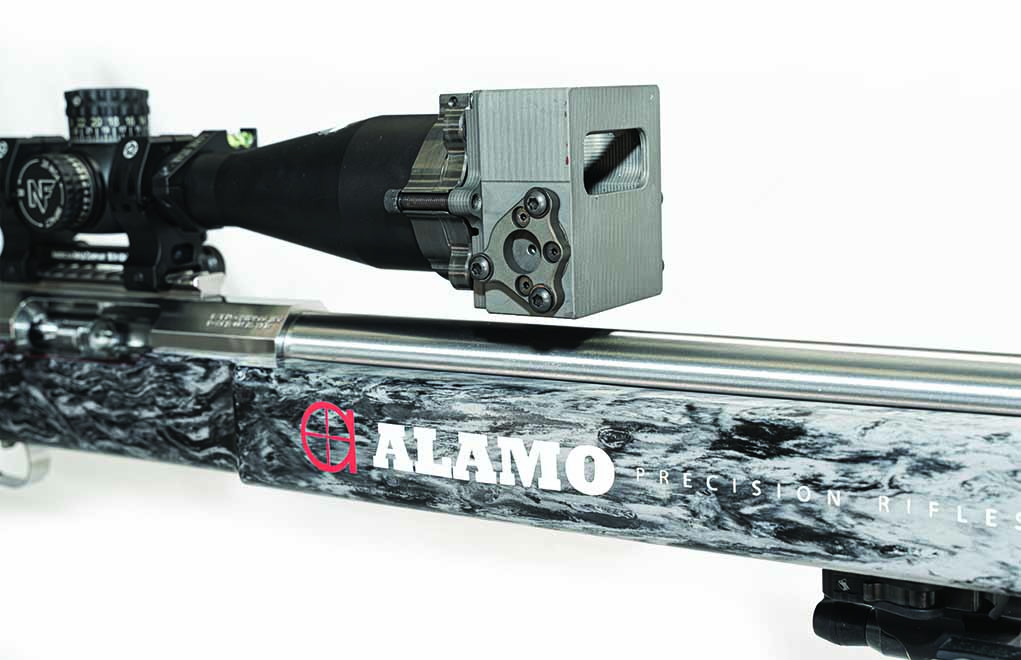
Pretty much every quality scope manufacturer has something that’ll fit the bill, but some of the ones to look at are the Athlon Optics Cronus 20-60×86 UHD, Hensoldt Spotter 45 or Spotter 60, Swarovski ATX or BTR, Kowa’s Highlander binoculars and the well-proven Leupold Mark 4 spotting scope.
Your wind coach is also going to need a high-quality spotting scope that’s at the same level as your spotter’s, but the reticle is less important. It isn’t a bad idea to just buy two of the same spotting scopes if you’re starting from scratch.
Bipods and Bags
The 2020 rules changed the bipod requirements: The highly adjustable, precision-built Phoenix Precision bipods were no longer within the rules. Now, the bipod must fold as you expect a bipod to fold and be no wider than 8 inches when folded against the rifle. The bipod must also attach to the rifle at a single point and only contact the ground at two points.
As far as rear support, any rear bag is acceptable, so choose one and run with it … or go with a monopod. The monopod must be attached to the rifle’s stock in order to be within the rules; no mechanical rear rests are allowed that aren’t attached to the rifle.
Ballistics Calculators
The amount of math needed to figure the firing solution for a 3,525-yard target is enough to cause migraines. In order to avoid feeling as if your brain’s going to explode, King of 2 Mile teams use ballistic calculators such as a Kestrel. While each calculator has its own merits, some of the cell phone-based programs you can look at to get a feel for what a ballistics calculator does are GeoBallistics’ BallisticsARC, StrelokPro and Ballistic Advanced Edition. There are some far more advanced programs out there, but those three should give you a place to start.
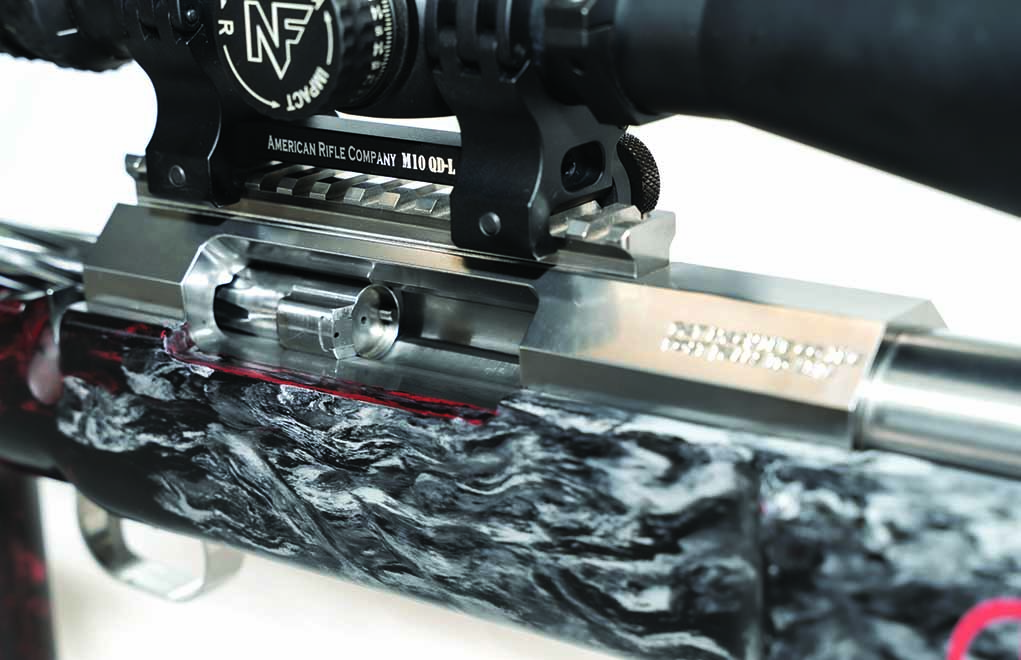
The Cost of Being Marginally Competitive
To put it mildly, getting into ELR shooting at the competitive level isn’t a cheap endeavor. Just putting together a package of the major items comes out to about $23,524.95 (that’s nearly the base price of a brand-new, base-model Honda Accord).
If you were wondering what that shopping list might look like, I’ve broken it down, trying my best to keep the costs “reasonable.” Keep in mind that these prices are for an entry-level setup, not a top-tier “Gucci” rifle:
Alamo Precision Rifles custom rifle in .375 CheyTac: $5,050
- Nightforce ATACR 7-35x56mm: $3,600
- TacomHQ Charlie TARAC: $800
- Spuhr scope mount: $400
- Atlas Super CAL bipod: $399.95
- Rifle case: $600
- (2) Swarovski BTR spotting scopes: $9,656
- (2) Really Right Stuff TVC-34L tripods: $2,320
- Kestrel 5700 Elite handheld wind meter: $699
Editor's Note: This article originally appeared in the 2021 Long-Range issue of Gun Digest the Magazine.

Next Step: Get your FREE Printable Target Pack
Enhance your shooting precision with our 62 MOA Targets, perfect for rifles and handguns. Crafted in collaboration with Storm Tactical for accuracy and versatility.
Subscribe to the Gun Digest email newsletter and get your downloadable target pack sent straight to your inbox. Stay updated with the latest firearms info in the industry.

![Best Concealed Carry Guns In 2025 [Field Tested] Wilson Combat EDC X9S 1](https://gundigest.com/wp-content/uploads/Wilson-Combat-EDC-X9S-1-324x160.jpg)


![Best 9mm Carbine: Affordable PCCs [Tested] Ruger Carbine Shooting](https://gundigest.com/wp-content/uploads/Ruger-Carbine-Shooting-100x70.jpg)
![Best AR-15: Top Options Available Today [Field Tested] Harrington and Richardson PSA XM177E2 feature](https://gundigest.com/wp-content/uploads/Harrington-and-Richardson-PSA-XM177E2-feature-100x70.jpg)
